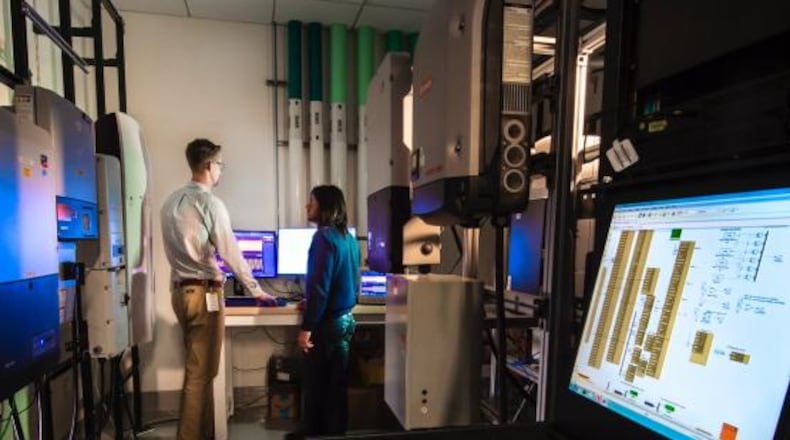The contract to Parallax provides for the application of cognitive systems engineering and agile software development in a variety of operational domains, the Department of Defense said when it announced the contract last month.
Some $85 million of the contract will go to payroll in Ohio, mostly in Beavercreek and Wright-Patterson Air Force Base, Andersh said in a new interview. Work is expected to be completed by May 2029.
The contract’s lineage can be traced to government work in the past eight years by Parallax and its predecessor corporation, said Darrell Lochtefeld, vice president and division manager RDT&E (research, development, testing and evaluation) for Parallax. This is not a follow-on contract on paper, but the work does involve continuity with earlier work, he said.
That earlier work featured creation of an analysis test bed for the military and other tools. This contract will focus on taking data from one system and fusing it with data from elsewhere, giving analysts a sense of where the enemy is and what he is doing, Lochtefeld said.
The tools draw intelligence from multiple sources, creating a product that is meant to give warfighters usable information that is greater than the sum of their parts.
“These tools have saved military lives and civilian lives, as well,” Lochtefeld said.
Wright State created a corporation in 2011 as a separate nonprofit to coordinate research funding. After the expiration of an affiliation agreement with the university, the Wright State Applied Research Corp. changed its name to Parallax Applied Research Corp. in late 2020.
In some cases, the military is using dated software, Lochtefeld said. That older software “often doesn’t handle the nuances of what the enemy puts in front of us,” Lochtefeld said. “And so they end up adapting. And to adapt, they use the tools they have at hand.”
Parallax provides the military with program “workarounds,” transforming what the military has into faster, more efficient programs, offering access to data that was previously unavailable.
This contract will have a “human languages technologies” element, giving users the ability to translate and interpret languages.
AFRL is the contract’s customer, but the National Geospatial Intelligence Agency and DARPA (the Defense Advanced Research Projects Agency) will be able to use these tools as well, Lochtefeld said.
The award is the result of a competitive acquisition and four offers were received, the DOD said. Fiscal 2021 research, development, test and evaluation funds in the amount of $100,000 were obligated at the time of award.
About the Author


